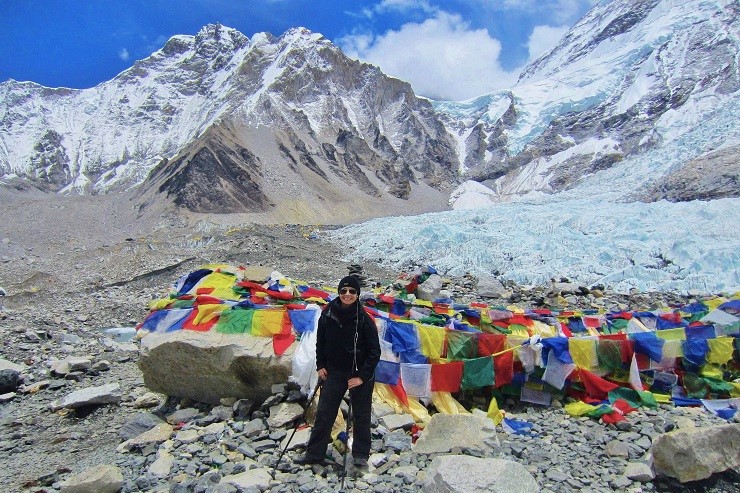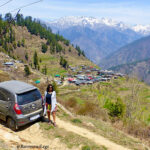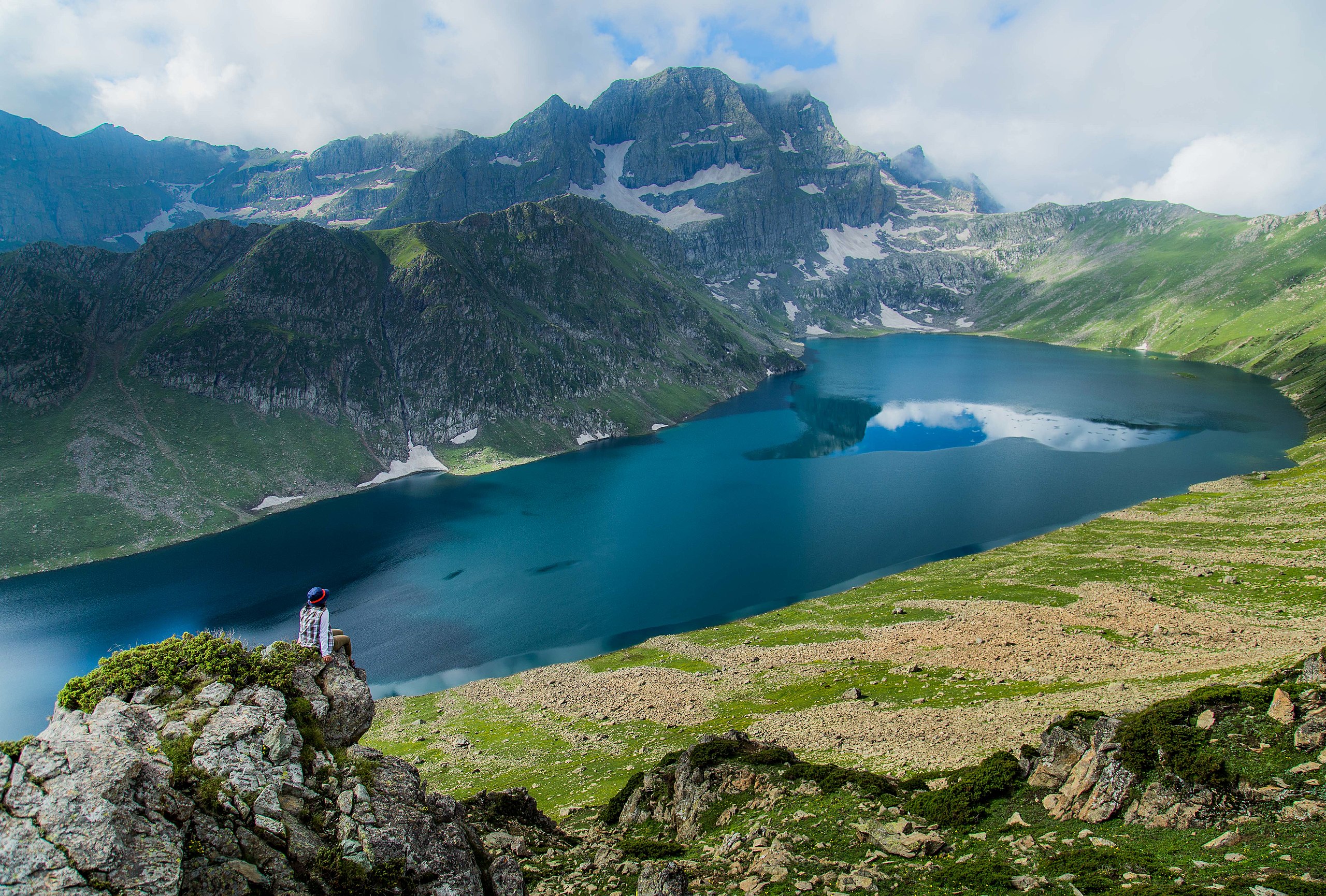Everest Base Camp Trek with Sherpa: A Trip of a Lifetime to the Heart of the Himalayas Considered one of the most famous treks in the world, this trek gives access to the mighty Mount Everest, the world’s tallest peak. After arriving in Kathmandu, the small, yet bustling capital of Nepal, the trekkers jet into the tiny town of Lukla, aptly dubbed the “Gateway to Everest.” Then you start your climb through a series of rolling green hills, over suspension bridges, through rhododendron forests and steep hillsides where you gaze at the beautiful view of snow-capped peaks in the distance.
On the way, you will be accompanied by an experienced Sherpa guide whose knowledge of the region and mountains will be invaluable. Sherpas are celebrated for their skillful knowledge of the treacherous riding, safety, and cultural information of the Khumbu region. As you progress through remote villages such as Namche Bazaar, Tengboche, and Dingboche, you’ll meet local Sherpa communities, each with their own distinct traditions and customs, enriching the journey with cultural experiences. Here at these altitudes, the air is thin, the trekking strenuous; the payoffs are tremendous, though. Just getting to Everest Base Camp itself is an epic moment: trekkers stand at the foot of the world’s highest mountain, gazing up at its towering summit and feeling an immense sense of accomplishment.
The trek also lends itself to personal development, with ancient monasteries to visit and prayer flags fluttering in the wind, which serve as a reminder of the spirituality with which the people of this region approach the mountains. They say the Everest Base Camp Trek is not only a test of strength and endurance but a journey that stays with you for the rest of your life, a memory etched with the grandeur of the Himalayas and the hospitality of our Sherpa friends.
Introduction to Everest Base Camp Trek
The Everest Base Camp (EBC) Trek is arguably the most renowned trek of all, drawing in thrill seekers from every corner of the planet. The Everest Base Camp Trek is known as one of the most breathtaking treks in the world. The trek can take between 12-14 days, but this varies based on the route and acclimatization programs.
The trek starts in Lukla, a small town that can only be reached by flight from Kathmandu, and winds through Sherpa villages, dense woods, and rugged alpine terrain. The hikers will walk through the lively town of Namche Bazaar, known as the gateway to the Himalayas, before ascending to the base camp at 5,364 meters (17,598 feet) altitude. Along the way, the trekker is smothered in views of Everest, Lhotse, Nupts, and other looming giants.
Everest Base Camp Trekking is much more than reaching the creative peak of the Trek, it involves the vivid culture of the Sherpa people, their traditions, monasteries, and Sherpa people. It is an arduous adventure that demands a high level of physical fitness, mental fortitude, and adequate planning. But for those who would rise to the challenge, the payoff is an experience they won’t forget, framed by some of the most stunning scenery on the planet.
An Insight of the Trekking Trail
The Everest Base Camp hike is a popular route in Nepal’s Khumbu area, with an approximate round trip distance of 130km (80 miles) The trek starts with a scenic flight from Kathmandu to Lukla, where the adventure begins. Trekking from Lukla, it passes Phakding and ascends slowly past stunning Sherpa towns like Namche Bazaar, Tengboche, Dingboche, and Lobuche, before reaching Everest Base Camp itself.
The daily trek generally is about 5 to 7 hours long, with altitude climbing steadily as trekkers head higher up into the mountains. The trail also features stunning views, including the panorama of Mount Everest, Lhotse, and Ama Dablam. The final push to Base Camp is the hardest part of the trek, as trekkers face thinning air and increased altitude. The trek is indeed a daunting one but it’s well worth the effort, enabling trekkers to take in Everest from the iconic perspective of Base Camp.
Everest Trek Guide The key to avoiding altitude sickness is acclimatization during the trek. Trekkers generally spend rest days at sites such as Namche Bazaar and Dingboche to acclimatize to high altitudes. Trekking is the most popular way to explore the region and most travelers hike the 8- to 12-day trek along the Everest Base Camp trail, which takes them to the foot of the world’s tallest mountain, the trek also offers lots of chances to see the ancient monasteries, including the famous Tengboche Monastery, and interact with the local Sherpa people.
The Value of Using a Sherpa Guide
So, the rescue: Why a Sherpa Guide is Mandatory During the Everest Base Camp Trek. Sherpas are an indigenous people of the region with tremendous strength, endurance , and intimate knowledge of the terrain. Sherpa guides also take care of trekkers’ safety, especially on challenging trails and high altitudes, so they are a vital part of every trek team.
Sherpas also know the signs of altitude sickness and can help trekkers take the necessary steps to mitigate the risks. They are also experienced at navigating trekkers through challenging or changeable weather, which can be a feature of the Everest region. Moreover, many Sherpa guides are also fluent in English and are able to provide cultural insight, making the trekking experience more rewarding as they learn more about the local customs, religion, and history of the area.
In addition, Sherpas will often shoulder some of the trekkers’ belongings, which minimizes the physical stress and maximizes the ability to enjoy the experience itself. Many also double as porters, carrying heavier items for trekkers so they can pack lighter backpacks. However, the presence of a Sherpa guide during your journey can turn this trek to Everest Base Camp into a safer and more enjoyable experience—while also adding an enriching dimension to the overall trek with their expertise and local knowledge.
When Should We Trek to Everest Base Camp?
When is the best time to trek to Everest Base Camp? These seasons between March to May and September to November provide the best weather for trekking.
Spring, particularly in April and May, offers mild temperatures, clear skies , and beautiful vistas of the nearby peaks. During this time, the region is lush and green, and trekkers are able to soak in all the beauty the region has to offer. The days are heat, but the nights can still be cool, especially at higher elevations. This season is also busy with climbers attempting to reach Everest’s summit, creating a festive atmosphere at Everest Base Camp.
Another prime trekking season Autumn falls between late September and November. The weather is dry and the skies are nearly always clear, offering stunning views of the mountains. Daytime temperatures are much cooler than during spring, but still bearable for trekking, while nighttime is much colder since the trek is at a higher elevation. Autumn sees fewer tourists than spring, making for a more peaceful atmosphere.
Trekking is also possible in winter and summer as well, but winter (December to February) is very cold with heavy snow and harsh conditions; heavy rainfall during the summer monsoon (June to August) also increases the risk of landslides and makes the trails muddy and slick.
Preparing for the Trek: Physical and Mental Preparation
The Everest Base Camp Trek is not for the faint of heart, and proper physical and mental preparation must be undertaken. With altitude soundings, tough terrain, and days of hiking, trekkers have to do endurance and strength training beforehand.
EBC with Kala Patthar Stamina is to be built through cardiovascular tasks like running, hiking, and biking. Toning exercises, especially for the legs, core, and upper body, are also key to getting through the uneven, at times steep terrain. Cardiovascular fitness will assist trekkers in facing the challenge of trekking at high altitudes with lower oxygen levels.
Mental preparedness is just as important as physical ability. The trek to Everest Base Camp is through fatigue, altitude sickness, and unpredictable weather. Trekkers should be ready to encounter challenges, including long days of walking and potential discomfort. With that being the case, it’s best to get into a positive frame of mind and be willing to take it step by step. Just take it easy and acclimatize slowly, as the walk is slow to acclimatize, and letting your body adjust to altitude is an essential part of the adventure without suffering altitude sickness.
Trekkers can remain mentally fortified throughout the trek by staying hydrated, staying motivated, and keeping the end — reaching Base Camp — in mind and in sight. Preparing also means researching the trek, covering potential risks, and being ready to take challenges on with flexibility and perseverance.
Everest Base Camp Trek Packing List
Packing for Everest Base Camp Trek is very important for trekkers to bring the necessary things for different kinds of situations during the trek. The high altitude and cold temperature combined with the demanding nature of the trek mean you really must pack smart and pack light.
Some important things you should bring are a good, fitting backpack, a warm sleeping bag (that is rated for the cold), and good trekking boots. Layered clothing is essential, beginning with moisture-wicking base layers, adding warmer mid-layers, and finally a waterproof outer layer to keep out rain or snow. It’s also important to pack a down jacket to stay warm at higher altitudes, as well as gloves, a hat, and a scarf to protect against the cold.
Other key elements at the top of the list are a headlamp, trekking poles for balancing, a first aid kit, water purification tablets or water filters and sunscreen use for UV rays found at higher altitudes. Useful foods to keep energy levels up all day are trekking snacks like energy bars, nuts and dried fruits.
Particularly for acclimatization, it’s wise to bring a medication to prevent altitude sickness, like Diamox. And bring a camera or smartphone to snap the stunning scenery. At last, a quality set of trekking clothes and a light, packable rain jacket will keep trekkers dry and comfortable throughout their trip.
Tips on Acclimatization and Acclimatization and Dealing with Altitude
Kala Patthar Trek One of the most important things to remember during the Everest Base Camp Trek is acclimatization. As hikers gain altitude, the air gets thinner and there is less oxygen, and it is crucial to allow the body time to acclimatize. If the body doesn’t acclimatize properly, altitude sickness can set in, with symptoms including headaches, dizziness, and nausea. Appropriately, there are built-in rest days during the trek so you can slowly ascend to higher elevations and avoid this. On these rest days, trekkers typically ascend to higher altitudes and descend to lower ones, a process called “climb high, sleep low.” This allows the body to acclimatize without overexerting itself. Staying hydrated, pacing yourself slowly, and listening to your body are key strategies in preventing altitude-related problems. You’ll be accompanied by a trained Sherpa guide, who will keep an eye on you and make sure you take proper precautions. In case symptoms of altitude sickness worsen, descent should be made immediately. Assimilation techniques such as these are a treasure trove to trekkers and bring the victor closer to reaching Mount Everest Base Camp and ultimately completing the trek without bother.
A Day-by-Day Breakdown of the Trekking Itinerary
Taking about 12 to 14 days, the Everest Base Camp Trek allows for gradual acclimatization whilst taking in breathtaking scenery. From Kathmandu to Lukla, and then a trek to Phakding. Day 2 leads trekkers to Namche Bazaar, the bustling gateway to the Everest region, where a rest day is taken to acclimatize and explore the area. Day 3 takes us to Tengboche with its famous monastery and on to meet the acclimatization challenge of Dingboche. From here on, the trek continues to Lobuche, before reaching Everest Base Camp on Day 8, where the stunning sight of the Khumbu Icefall and surrounding peaks comes into view. The last few days are spent heading back to Lukla, then hopping on a flight to Kathmandu to finish the expedition. The time taken for the trek allows trekkers a good amount of time to rest, get acclimatized, and discover nature.
History and Culture of the Khumbu Region
EBC Trekking The Khumbu region is home to Mount Everest & its cultural heritage & history For centuries, this region has been home to the indigenous Sherpa people, famous for their incredible putting-mountain-climbing skills. Their culture is entwined with Tibetan Buddhism, and there are countless monasteries, stupas, and prayer flags along the trek. Such as the famous Tengboche Monasterydating — the oldest and most important in the region, which gives trekkers an insight into the spiritual life of the Sherpas. The Sherpas have long been behind the success of climbing expeditions in the Himalayas, particularly foreign 尼泊尔 climbers in their attempts to reach the summit of Everest. The Khumbu area has provided a key stop for trade between Tibet and Nepal throughout history. The Sherpa people’s endurance and reverence for the mountains are ingrained in their culture and reflect years of tradition, which are encapsulated in their daily activities, festivals, and ceremonies. Traversing the Khumbu is not only a measure of physicality, but also one of culture; each step involves learning about the Sherpa’s intimate relationship with the land, spirituality, and mountains themselves.
What to Know About the Trek: Terrain, Weather, and Challenges
Everest Base Camp Trek has a diverse range of terrain consisting of rocky roads, narrow walks, steep climbs, and suspension bridges. Early in the trekking route, you’ll encounter thick forests of rhododendrons and pine trees, while higher elevations show more barren terrain, with glimpses of the towering peaks. With some steep sections, the trail on the way to Everest Base Camp is mostly a slant going upwards, as you might guess. They call it a mountain desert because the climate can change from warm and sunny below to cold, windy, and snowy above. Temperatures can plummet, especially at night, so it is essential to pack layers and proper gear. Elevation is harder to manage than the physical demands of the three-day walk. This is because as you gain altitude the oxygen decreases in the air, leading to fatigue and even altitude sickness. However, with sufficient acclimatization, the vast majority of trekkers are able to overcome the physical challenges. The weather is another challenge, especially the wind and snow, which can render parts of the trek impossible. But this is something unique to experience and it is more than realizing your dreams.
Mount Everest Base Camp Trek: Health and Safety Tips
Health and safety is the top priority when going to the Everest Base Camp Trek. Acclimatization is one of the most important factors that play a role in preventing altitude sickness. Include rest days as needed, and ensure you go slow and give your body time to acclimatize to the thinning air. Another key to staying healthy: is hydration — dehydration can worsen altitude sickness, so drink lots of water during the trek. Check what food you eat; eat light, energy-packed meals — high food is difficult to chew at the height. Packing proper clothing and gear to stay warm and dry, of course, matters too. But layering is important, as temperatures can fluctuate widely. Good sleeping bags, waterproof clothing and coats, and snow-trekking boots will also keep you comfortable and safe. It is recommended that you indeed shoot with an elementary first assistance package which includes medicine for typical issues like headaches, nausea, or colds. If you do notice symptoms of altitude sickness, such as dizziness, headache, or fatigue, report these immediately to your guide, as well as take appropriate action, whether that’s resting or descending. Having an experienced guide and Sherpa team accompanying you dramatically increases your safety, as they truly know the terrain, the best routes for travelers, and how best to handle a wide range of emergencies. Finally, make sure the insurance you have includes altitude-related problems and evacuation.
Closing and Key Highlights from the Adventure
More than just a physical challenge, the Everest Base Camp Trek is a transformative journey through stunning natural beauty, rich in local culture, and a place for personal achievement. The trek is an incredible opportunity to see the beauty of Mount Everest a little more closely and experience the fascinating life of the Sherpas. From the grueling trials of roughing it on the trail to adapting to the dwindling oxygen supply, each hurdle along the journey prepares you to appreciate the ultimate reward: the pride of reaching Everest Base Camp. Trekking on this trail offers a journey through breathtaking landscapes, unique wildlife, and moving stories of mountaineering history. Aside from the physical challenge, it gives an opportunity for reflection and personal growth. Your training is complete, and all that’s left is the climb of a lifetime to the summit of Everest. The spirit of fellow trekkers and the expertise of local Sherpas bring a sense of togetherness that makes the journey all the more enriching. So whether you are trekking for the very first time or an experienced trekker, an Everest Base Camp Trek can give you an extraordinary experience.








